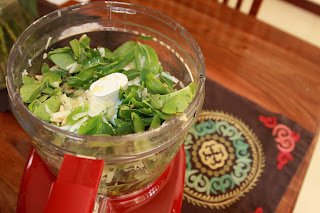I remember, as a child, the ritual of making the Christmas cake. I remember mum carefully measuring out the ingredients, I remember her preparing the tin and tying newspaper around it, I remember licking the bowl when the cake was in the oven, and I remember the heavenly Christmas smell that filled the house for the 4 hours the cake was cooking.
I've taken up the tradition of the Christmas cake, and determined to mimic mum's I rummaged through her tattered much loved recipe book and found this recipe. Handwritten in mum's handwriting, the mum in Mum's Xmas Cake is actually my grandmother. So this recipe has been through 3 generations and when my children are ready to cook their first Christmas cake, that will make four. I hope you enjoy it as much as our family do.
Nana's Christmas Cake
- 1 kilogram mixed fruit (I used currants, sultanas, and mixed peel)
- 180 grams butter
- 1 cup brown sugar
- 1 tablespoon golden syrup
- 1 teaspoon mixed spice
- 1 teaspoon ground nutmeg
- 2 teaspoons ground cinnamon
- 2 tablespoons brandy (or 1 teaspoon brandy essence)
- 1 teaspoon vanilla essence
- grated rind of 1 lemon (or 1 teaspoon lemon essence)
- 3 eggs
- 2 1/2 cups plain flour
- 1 1/2 teaspoon baking powder
- 2 tablespoons milk
- 1 teaspoon baking soda
Method
1. Soak fruit overnight in 1 cup hot water. Bring to boil and simmer for 10 minutes.
2. Remove from heat and add in the butter, sugar, golden syrup, spices, brandy, vanilla essence and lemon. Stir to melt butter then leave to cool. Heat oven to 130 degrees celcius (250 degrees fahrenheit).
3. Beat eggs and add to the fruit mixture. Dissolve baking soda in milk and add, and finally add sifted flour and baking powder. Mix well and pour into well lined 8 inch cake tin. Wrap newspaper around the tin and tie with string (this insulates the cake to prevent the edges burning while the middle of the cake is cooking).
4. Place the tin in the oven, on top of a magazine (to insulate the bottom) and cook slowly for 3 hours. Check to see if a skewer comes out clean, if not then cook for another hour. Test again. Turn the oven off and leave the cake in oven to dry out.
5. Put the cake into a container with a good seal. Poke holes in the cake with a skewer, and gently pour a few teaspoons brandy into the holes. Repeat every week. Store in a dark cupboard until Christmas. Cake is best made 2 months before Christmas.























































